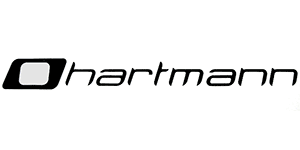
German industrial designer and synthesizer developer Axel Hartmann has worked as an expert in many companies. Immediately after graduating the Technical University of Saarbrücken in 1989, Axel joined Waldorf Synthesizer team, where he worked on Wave, Microwave XT, Pulse synthesizer projects and, subsequently, took part in the development of Zarenbourg and Blofeld concepts as a third-party contractor. After years of working in Waldorf, Axel moved to Alesis and participated in the development process of the analog mega-synthesizer Andromeda A6 which still has no alternatives. Orders from such eminent companies as Moog (Little Phatty, Minimoog Voyager XL), StudioLogic (Sledge), Arturia (Origin, Spark & MiniBrute) and Access (Virus Polar) followed.
But the main project of Axel’s career is what he devised himself - Hartmann Neuron. Stephan Bernsee, who had previously founded his own company Prosoniq, assisted Axel in designing Hartmann’s instrument (2000). Hartmann got his own company thanks to Prosoniq. Hartmann Music has won several awards for innovation in synthesis technology.
Bernsee founded Prosoniq in 1990 deciding to use artificial neural network technology in music. The German developer of software audio instruments is famous for such products as OrangeVocoder - still one of the best vocoder emulators with a tunable equalizer - and TimeFactory, designed for quality changes in pitch and tempo.
Thus Hartmann Neuron enlisted the huge support of Prosoniq, but, nevertheless, was founded under Hartmann Music brand name, owned by both Hartmann and Bernsee during some time. The sound generating of the synthesizer was based on a new form of synthesis - resynthesis. Neuron created a digital computer model based on the analyzed samples, which could later be resynthesized into a completely new sound, being processed by an impressive number of joysticks that also adjust the meta-musical aspects relating to the properties of acoustics.
Neuron was rightfully the only one of its kind: instead of oscillators, he used Resynators and a morphing module. The Resynators operated not with the samples, but with the mathematical models which resulted. Morphing is an alternative way of mixing models, each of which is subject to the settings related to the sound source and its change.
Despite the strong support of representatives of the music world (Hans Zimmer among them) and interest in innovative technology, due to unresolved issues with the distribution and manufacturing of instruments, the company ceased the production in 2004. For a long time software has remained a real problem for those wishing to use Neuron, but the updated version NeuronVS came out and became available for free at neuronsynth.com.
In 2015, Axel Hartmann announced the release of a limited series of his new synthesizer (40 units) Hartmann 20 based on the wavetable synthesis and Neuron’s sample set. In June 2016 synthtopia.com posted that the synthesizer would be available a bit later the same month and would cost about $20000, but it seems that the release has been postponed. We hope, for a while. The photos and technical specs revealed (meagerly) are promising, and in general, a virtual analog Synthesizer clearly picks the strings of nostalgia stretched by Waldorf Wave.
Hartmann 20 Synthesizer







